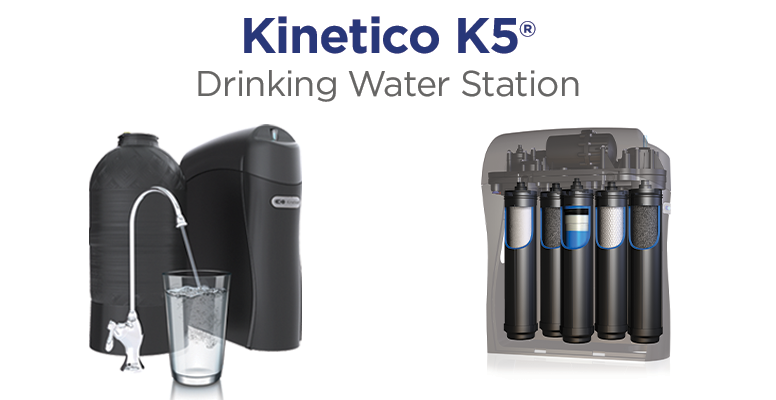Total Dissolved Solids (TDS) are the amount of organic and inorganic materials such as metals, minerals, salts, and ions that are dissolved in water.
Total Dissolved Solids (TDS) refer to any inorganic salts (e.g., calcium, magnesium, potassium, sodium, bicarbonates, chlorides, and sulfates) and small amounts of organic matter present in water. TDS can also include some trace elements, such as heavy metals like lead and arsenic, depending on the water source.
HOW DO TOTAL DISSOLVED SOLIDS (TDS) GET INTO YOUR WATER?
Total dissolved solids come from both natural and man-made sources. Water can pick up TDS such as minerals, salts and other elements as it naturally flows through soil and rock. TDS from man-made sources can come from municipal water treatment chemicals, an aging water distribution system, urban and agricultural runoff, sewage and industrial wastewater, to name a few.
Here is a list of common total dissolved solids that may be present in your water –
- Calcium
- Chloride
- Magnesium
- Potassium
- Zinc
- Aluminum
- Copper
- Lead – may come from old plumbing
- Arsenic
- Iron
- Chlorine – water treatment plants
- Sodium
- Fluoride – natural and may be added to water
- Bicarbonates
- Sulfates
- Pesticides – agricultural runoff
- Herbicides – agricultural runoff
SIGNS OF HIGH TDS

Total dissolved solids are present in virtually all water supplies, but the levels can vary dramatically. You may not realize you have high levels of TDS, but you can look for a few signs such as issues with your home’s plumbing system or water-using appliances, scale on fixtures, poor water taste, cloudy water, or problems with your skin. Depending on what makes up the TDS in your water, you may not notice anything is amiss or you may have grown accustomed to having water with high amounts of TDS.
- Metallic taste – Water that tastes like metal can indicate the presence of iron, copper, manganese, zinc or other metals. Though not harmful in trace amounts, large quantities of both zinc and copper can be harmful to humans.
- Scale in water pipes – Just as scale build-up forms on fixtures, it also forms in water pipes. Although you can’t see it, mineral deposits build up inside water pipes and reduce water pressure. In extreme situations, this can lead to pipe replacements and other challenges in your home.
How Dangerous are TDS in our Drinking Water?
The concentration of TDS in water is typically measured in parts per million (ppm) or milligrams per liter (mg/L). TDS levels can vary widely depending on the water source and environmental factors. High levels of TDS in drinking water are not necessarily dangerous on their own, but they can indicate the presence of other contaminants that may pose health risks. Some potential dangers associated with elevated TDS levels in water include:
- Health Effects: Consuming water with high TDS levels may lead to various health issues, including gastrointestinal problems, dehydration, and mineral imbalances. The specific health effects can depend on the types and concentrations of dissolved solids present.
- Taste and Odor: High TDS levels can give water a salty or brackish taste, which may be unpalatable to some people. Additionally, water with high TDS levels may have unpleasant odors.
- Corrosion: Water with high TDS levels can be corrosive to plumbing fixtures and appliances over time, leading to damage and potentially costly repairs.
- Scaling: Elevated TDS levels can also contribute to scaling or mineral buildup in pipes, water heaters, and other water-using equipment, reducing their efficiency and lifespan.
- Environmental Impact: Discharging water with high TDS levels into the environment can negatively impact aquatic ecosystems by altering water chemistry and harming aquatic life.
RECOMMENDATION: SCHEDULE A WATER TEST TO SEE WHATS IN YOUR WATER
In some cases, water treatment may be necessary to reduce TDS levels to within acceptable limits and ensure the water is safe for consumption. Testing water for TDS and other contaminants is recommended to determine its quality and any necessary treatment measures.
HOW TO REDUCE TOTAL DISSOLVED SOLIDS IN WATER?
Depending on your TDS levels and what other issues you may have with your water, there are a number of water treatment systems available, both whole home and point-of use, to improve your water. Reverse osmosis is one of the most popular methods to significantly reduce TDS from your drinking water.
Reverse osmosis, or RO, is a water treatment process in which water passes through a semi-permeable membrane. Holes, or pores, in the RO membrane, are just big enough for the passage of a water molecule. Even small particles such as tobacco smoke or paint pigments are too big to flow through an RO membrane. The water that makes it through a reserves osmosis system is high quality, virtually contaminant-free, and clean.
Kinetico offers reverse osmosis systems that are third-party certified to reduce more contaminants than other comparable systems. We also provide customizable RO systems that allow you to include filter cartridges for specific contaminant removal or to add minerals for taste.

KarSare Systems is an Authorized Independent Kinetico Dealer.
Looking for a high-quality water purifier in Central KY? Our team at KarSare Systems can help with that, we are located in Versailles KY but serve the entire state of Kentucky and southern Indiana. Combine the superior design and performance of Kinetico water softeners, reverse osmosis drinking water systems, and water filters with our exceptional service, and you have a winning combination for solving just about any water problem. Call Lisa at (859) 873-7909







